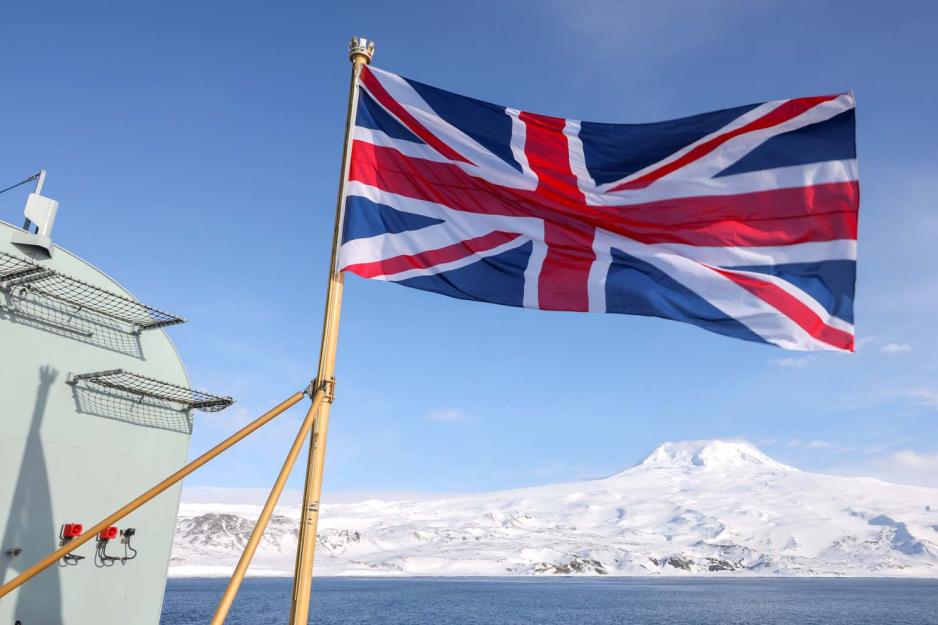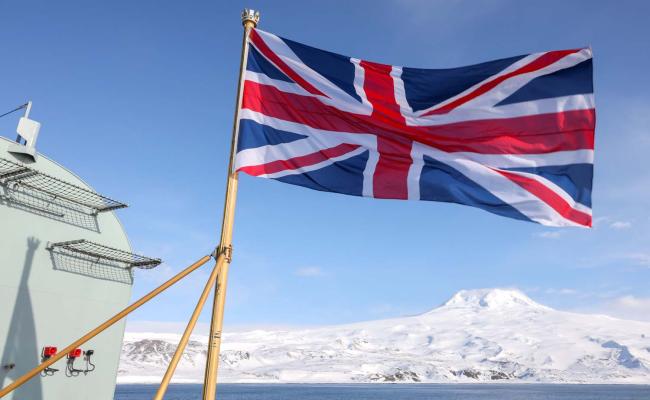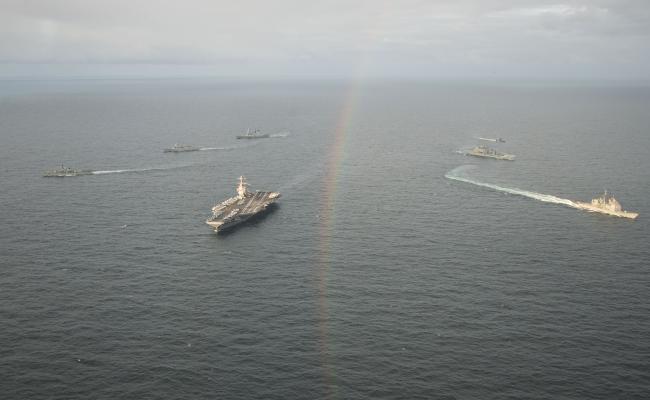Op-ed: Our Friends in The North: UK Strategy Towards the Arctic

Aircraft carrier HMS Prince of Wales visiting the remote Norwegian Island of Jan Mayen in April 2022. (Source: Royal Navy)
The opinions expressed here belongs to the author and do not represent the views of High North News.
How should the UK respond to rapid geopolitical and environmental change in the Arctic? This was the question that the UK parliament’s International Relations and Defence Committee, which I chair, set out to answer in its recent inquiry into the UK’s Arctic strategy.
The report from our inquiry, Our friends in the North: UK strategy towards the Arctic, was published at the end of November.
Our starting point was that while the UK is not an Arctic state, developments in the region have a major impact on the UK’s security, environment and energy supply. To exercise influence in the region, the UK’s goal, as articulated in its previous strategy, should be to act as a “good neighbour” to its Arctic allies and the peoples who live in the region.
In particular we argued that the UK has an important contribution to make in security and mutual defence in the High North. Maintaining a credible UK security role in the High North has become all the more important since Russia’s illegal full-scale invasion of Ukraine, and Finland and Sweden’s decision to join NATO.
Finland and Sweden’s accession is a boon to NATO.
NATO would need to fight closely with Finland and Sweden
They bring to the Alliance an impressive industrial base, extraordinary expertise in operating in cold weather conditions, and long-standing experience in managing and deterring Russian pressure, including in the “grey zone” or “sub-threshold space”, of which Russia’s attempts to send migrants from third countries across the border into Finland is just the latest example.
In our report we argue that NATO enlargement provides an opportunity for the UK to learn from the Nordic experience, including by deepening co-operation with the Hybrid Centre of Excellence in Helsinki.
It has always been assumed that in the event of any conflict with Russia, NATO would need to fight very closely with Finland and Sweden. Enlargement means that this geography has now become integral to NATO, giving it strategic depth. However, it also puts obligations on the Alliance to ensure that it delivers credible security guarantees to its new Nordic members.
As NATO Assistant Secretary General Angus Lapsley told our inquiry, the assumption that the High North “would be a backwater, that it would not be part of an overall conflict, is one that we and the Arctic nations now feel much less confident about”.
Also read (the article continues)
Effective deterrence in the High North requires inter-operability and close defence co-operation. During our meetings in Norway and Finland, officials and experts drew attention to the fact that the current NATO command structure for the Alliance’s new members runs somewhat at cross-purposes to efforts to strengthen joint defence.
At present, Finland is under NATO’s Brunssum Joint Force Command (JFC) (as will be Sweden, once its accession process is complete), while Norway is under JFC Norfolk.
Our report argued that NATO should expand the capacity of JFC Norfolk as fast as is practicable to enable Finland and Sweden to be placed under its command. In the interim, it is particularly important that NATO tests the flexibility and inter-operability between the two joint commands.
The UK has an important part to play in supporting deterrence in the High North as the lead nation of the Joint Expeditionary Force and one of the few non-Arctic NATO members that continues to invest in the military capability to operate in the High North.
Our Committee was pleased to note that the UK has increased the scale and frequency of cold-weather training and exercises in the High North, establishing a new Arctic operations base in Camp Viking in Northern Norway to serve as a hub for Royal Marines Commandos.
However, our report also raised concerns that the UK has only a limited number of platforms to operate in the region. This includes a small fleet of just nine P-8A Maritime Surveillance and Patrol Aircraft, and one dedicated ice patrol ship, HMS Protector, which must cover both polar regions and spends a large part of each year in the Antarctic.
Witnesses to our inquiry also emphasised that it was vital that the UK and other NATO allies conduct regular training in Arctic conditions, as operating in the region requires specialised skills that can be quickly lost.
As a mid-sized defence power with global ambitions, the UK’s armed forces face a perennial risk of overstretch. A previous report by our Committee on the UK’s defence policy argued that the UK needs to do more to clearly articulate its priorities and the hard choices that may be required in the face of competing pressures on resources.
As it does so, we believe the UK needs to ensure it remains a credible security partner to its Nordic allies – and stand ready to devote greater resources and attention to supporting our friends in the North in the coming years.



